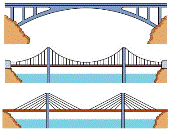Civil and Environmental Engineering
Document Type
Article
Date of this Version
2012
Citation
Saunders SE, Bartelt-Hunt SL, Bartz JC (2012) Resistance of Soil-Bound Prions to Rumen Digestion. PLoS ONE 7(8): e44051. doi:10.1371/ journal.pone.0044051
Abstract
Before prion uptake and infection can occur in the lower gastrointestinal system, ingested prions are subjected to anaerobic digestion in the rumen of cervids and bovids. The susceptibility of soil-bound prions to rumen digestion has not been evaluated previously. In this study, prions from infectious brain homogenates as well as prions bound to a range of soils and soil minerals were subjected to in vitro rumen digestion, and changes in PrP levels were measured via western blot. Binding to clay appeared to protect noninfectious hamster PrPc from complete digestion, while both unbound and soil-bound infectious PrPSc proved highly resistant to rumen digestion. In addition, no change in intracerebral incubation period was observed following active rumen digestion of unbound hamster HY TME prions and HY TME prions bound to a silty clay loam soil. These results demonstrate that both unbound and soil-bound prions readily survive rumen digestion without a reduction in infectivity, further supporting the potential for soil-mediated transmission of chronic wasting disease (CWD) and scrapie in the environment.



Comments
Copyright 2012 Saunders et al. This is an open-access article distributed under the terms of the Creative Commons Attribution License, which permits unrestricted use, distribution, and reproduction in any medium, provided the original author and source are credited.